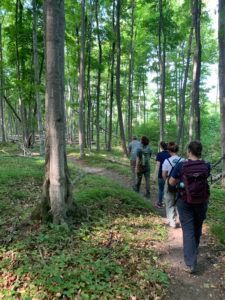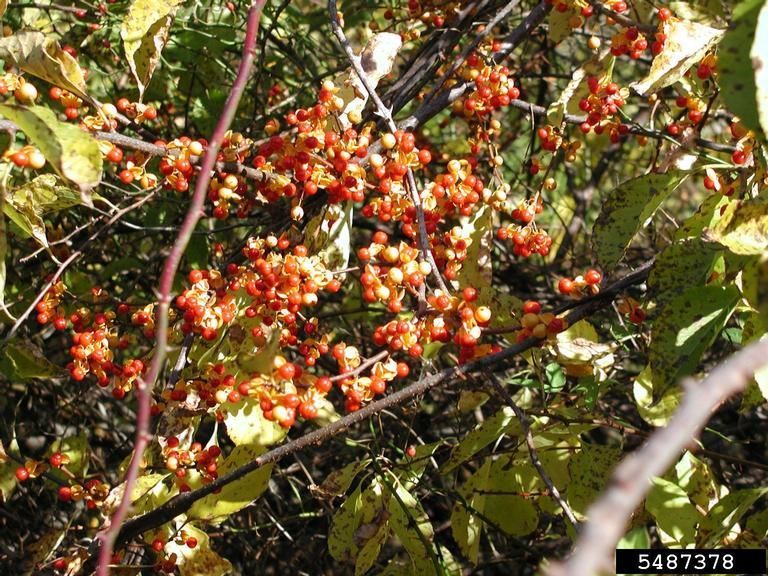An Introduction to Trail Building
Once you’ve done a day of trail maintenance, you’ll never look at trails the same way.

HPA members started the training by learning how to flag and map out a trail.
This was one of the many lessons imparted on me when I went to participate in a sustainable trail building design training with the Grand Traverse Regional Land Conservancy(GTRLC).
The training was for members of the Huron Pines AmeriCorps(HPA) program and took place at the Torch Lake Nature Preserve. The purpose of the day was to discuss the stages of how a trail is built, and key considerations of building a trail sustainably.
According to the Center for Outdoor Ethics, the second principle of Leave No Trace is to travel and camp on durable surfaces, “ Land management agencies construct trails to provide identifiable routes that concentrate foot and stock traffic. Constructed trails are themselves an impact on the land; however, they are a necessary response to the fact that people travel through natural areas. Concentrating travel on trails reduces the likelihood that multiple routes will develop and scar the landscape. It is better to have one well-designed route than many poorly chosen paths.”
Led by GTRLC staff, HPA members learned about the considerations of elevation and slope when flagging out a new path. Especially in areas with sandy soil, it is critical to design the trail so water will not run along the trail and wash out sections. HPA members learned about establishing a bench cut to traverse slopes in a fashion that will prevent trails from washing out.
Stages of trail building also include establishing and clearing the trail corridor, which is generally 6 foot wide and 8 foot high, removing organic material and working to establish the trail bed, and finishing with detail work to make sure the soil is set.
To learn more about trail building design , and standard trail building tools , you can click on those links to watch helpful videos made by GTRLC.
The post An Introduction to Trail Building appeared first on Michigan United Conservation Clubs.



